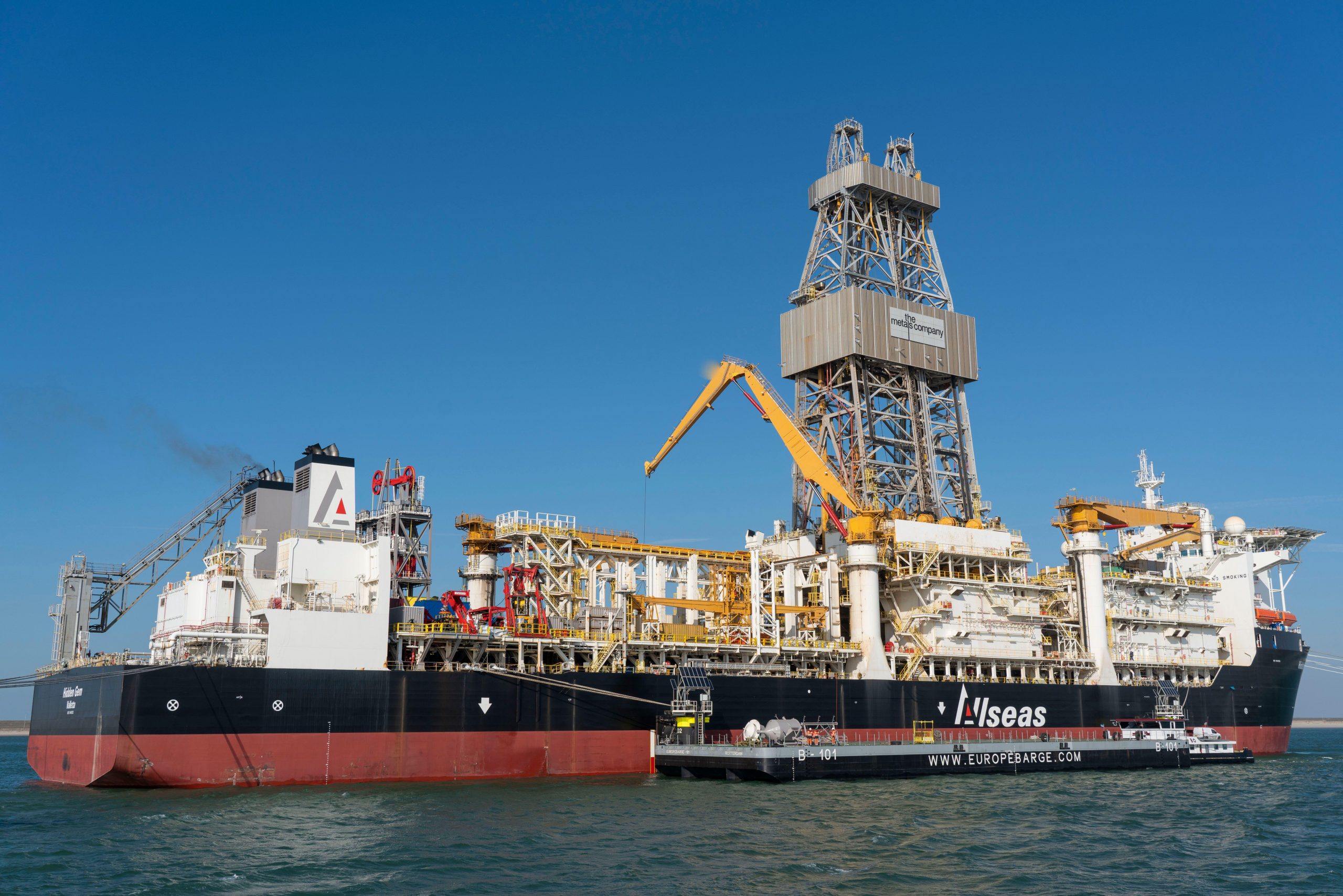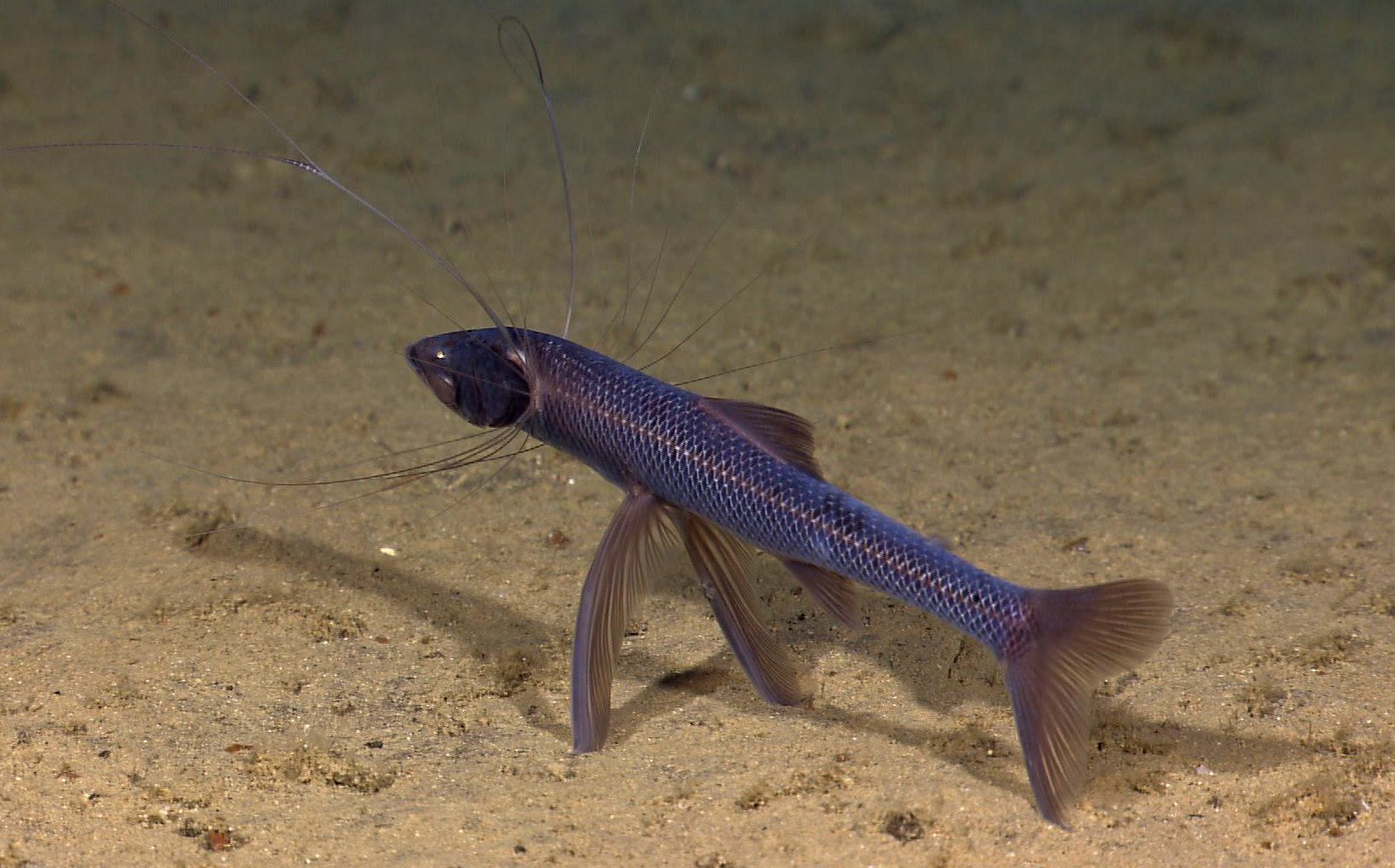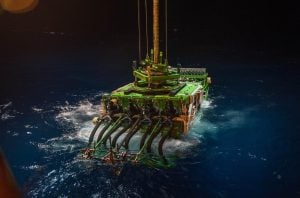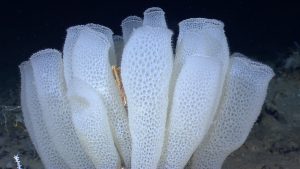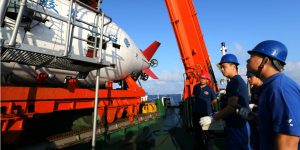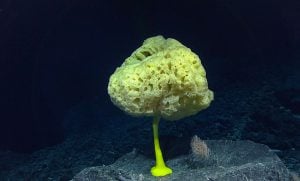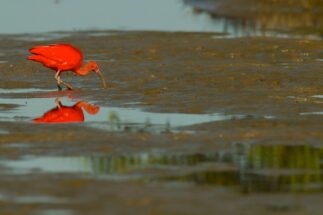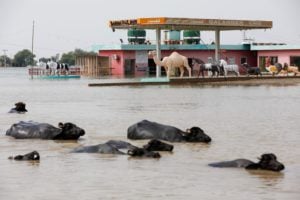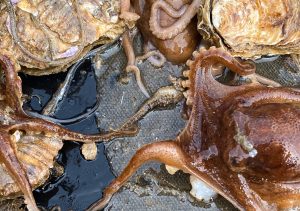On 14 September, the Hidden Gem – an industrial drill ship operated by a subsidiary of The Metals Company (TMC), a Canadian deep-sea mining corporation – left its port in Manzanillo, Mexico. From there, it headed toward the Clarion-Clipperton Zone (CCZ), a vast abyssal plain in international waters of the Pacific Ocean that stretches over 4.5 million square kilometres across the deep sea, roughly equivalent in size to half of Canada.
The goal of TMC’s expedition is to test its mining equipment that will vacuum up polymetallic nodules, potato-shaped rocks formed over millions of years. The nodules contain commercially coveted minerals like cobalt, nickel, copper and manganese. TMC, a publicly traded company listed on the Nasdaq exchange, announced that it aims to collect 3,600 metric tons of these nodules during this test period.
This operation came as a surprise to opponents of deep-sea mining, mainly because of the stealth with which they said the International Seabed Authority (ISA) – the UN-affiliated intergovernmental body dually responsible for overseeing mining in international waters and for protecting the deep sea – authorised TMC to commence the trial.
It is the first such trial the ISA has authorised after years of debate over whether it should permit deep-sea mining to commence in international waters, and if so, under what conditions. News of the authorisation did not come initially from the ISA, but from TMC itself in a press release dated 7 September. The ISA eventually posted its own statement on 15 September, more than a week after TMC’s announcement. It is not clear when the ISA granted the authorisation.
“We’ve been caught off guard by this,” said Arlo Hemphill, a senior oceans campaigner at Greenpeace, an organisation campaigning to prevent deep-sea mining operations. “There’s been little time for us to react.”
Mounting concerns, sudden actions
Several weeks ago, in July and August, delegates to the ISA met in Kingston, Jamaica, to discuss how, when and if deep-sea mining could begin. In July 2021, discussions had acquired a sense of urgency when the Pacific island state of Nauru triggered an arcane rule embedded in the United Nations Convention on the Law of the Sea (UNCLOS) that could obligate the ISA to kick-start exploitation in about two years with whatever rules are in place at the time. Nauru is the sponsor of Nauru Ocean Resources Inc (NORI), a subsidiary of TMC that is undertaking the tests. TMC said that it expects to apply for its exploitation licence in 2023, and if approved by the ISA, to begin mining towards the end of 2024.
The ISA subsequently scheduled a series of meetings to accelerate the development of mining regulations, but has yet to adopt a final set of rules.
The delay is due, in part, to the increasing number of states and observers from civil society raising concerns about the safety and necessity of deep-sea mining. Some member states, including Palau, Fiji and Samoa, have even called for a moratorium on deep-sea mining until more is understood about the marine environment that companies want to exploit. Other concerns hinge upon an environmental impact statement (EIS) that NORI had to submit in order for mining to begin.
NORI submitted an initial draft of its EIS in July 2021, as per ISA requirements, and an updated version in March 2022.
Matt Gianni, a political and policy adviser for the Deep Sea Conservation Coalition (DSCC), a group of environmental NGOs calling for NORI’s testing approval to be rescinded, said that the ISA’s Legal and Technical Commission (LTC) – the organ responsible for issuing mining licenses – previously cited “serious concerns” about NORI’s EIS, including the fact that it lacked baseline environmental data. The LTC had also raised concerns about the comprehensiveness of the group’s Environmental Management and Monitoring Plan (EMMP), he said.
But then, “all of a sudden”, the LTC granted approval for the mining test without first consulting ISA council members, said Gianni, who acts as an observer at ISA meetings.
The fact that TMC announced the decision before the ISA did “reinforces the impression that it’s the contractor and the LTC and the [ISA] secretariat that are driving the agenda, and states are following along,” Gianni said.
Harald Brekke, chair of the LTC, sent a statement similarly worded to the recent announcement made by the ISA. He said that the LTC had reviewed NORI’s EIS and EMMP for “completeness, accuracy and statistical reliability,” and that an internal working group had worked closely with NORI to address concerns. In response, the mining group adequately dealt with the issues, which allowed the LTC to approve the proposed testing activities, he added.
Unfortunately, the [International] Seabed Authority is pro-miningSandor Muslow, former ISA director of environment and minerals
“This is a normal contract procedure between the [ISA] Secretary-General and the Contractor, on the advice and recommendations by the [Legal and Technical] Commission,” Brekke said in the emailed statement. “It is not a decision to be made by the [ISA] Council. According to the normal procedure of ISA, the details of this process will be [communicated] by the Chair of the Commission to the Council at its session in November.”
“I also would like to point out that this procedure has followed the regulations and guidelines of ISA,” Brekke added, “which are implemented to take care of the possible environmental impacts of this kind of exploration activity.”
Yet Gianni said he did not believe the LTC had satisfactorily reviewed the EIS for its full potential of environmental impact, nor had it considered the “serious harmful effects on vulnerable marine ecosystems” as required under the ISA’s own exploration regulations for polymetallic nodules.
Questions about transparency
Sandor Mulsow, who worked as the director of environment and minerals at the ISA between 2013 and 2019, said that the ISA “is not fit to carry out an analysis of environmental impact assessment” and that the grounds on which the ISA authorised NORI to begin testing were questionable.
“Unfortunately, the [International] Seabed Authority is pro-mining,” Mulsow, who now works as a professor at Universidad Austral de Chile, said. “They’re not complying with the role of protecting the common heritage of humankind.”

A recent investigation by the New York Times revealed that the ISA gave TMC critical information over a 15-year period that allowed the company to access some of the most valuable seabed areas marked for mining, giving it an unfair advantage over other contractors.
The ISA has also frequently been criticised for its lack of transparency, including the fact that the LTC meets behind closed doors and provides few details about why it approves mining proposals. The ISA has previously granted dozens of exploratory mining licences to contractors, although none have yet received an exploitation licence. While NORI is not technically undertaking exploratory mining in this instance, their testing of mining equipment falls under exploration regulations.
Mongabay reported that transparency issues were even prominent during the ISA meetings that took place in July and August this year, including restrictions on participation and limited access to key information for civil society members.
The ISA did not respond to questions, instead deferring to the statement from Brekke, the LTC chair.
‘Full-blown mining in test form’
During the mining trial set to take place in the CCZ – which could begin as early as next week – NORI will be testing out its nodule collector vehicles and riser systems that will draw the nodules about 3,000 meters from the seabed to the surface. If NORI does begin exploitation in 2024, Gianni said the risers will be pumping about 10,000 metric tonnes of nodules up to a ship per day.
“That’s a hell of a lot,” Gianni said. “This is heavy duty machinery. This is piping that has to withstand considerable pressure.”
NORI intends to extract 1.3 million metric tons of wet nodules each year in the exploitation stage of its operation, TMC reported.
The Metals Company argues that this mining will provide minerals necessary to power a global shift toward clean energy. Indeed, demand for such minerals is growing as nations urge consumers to take up electric vehicles in an effort to combat climate change.
Mining opponents, however, have argued that renewable technologies like electric cars don’t actually need the minerals procured from mining.
Moreover, a growing cadre of scientists have been warning against the dangers of deep-sea mining, arguing that we don’t know enough about deep-sea environments to destroy them. What we do know about the deep-sea suggests that mining could have far-reaching consequences, such as disturbing phytoplankton blooms at the sea’s surface, introducing toxic metals into marine food webs, and dispersing mining waste over long distances across the ocean – far enough to affect distant fisheries and delicate ecosystems like coral reefs and seamounts.
“Every time somebody goes and collects some sample in that area of the Clarion-Clipperton Zone, there’s a new species coming up,” Mulsow said. “We don’t know how to name them, and we want to destroy them.”
We believe that polymetallic nodules are a compelling solution to the critical mineral supply challenges facing society in our transition away from fossil fuelsThe Metals Company spokesperson
TMC has stated that the testing activities will be monitored by “independent scientists from a dozen leading research institutions around the world.”
However, Hemphill of Greenpeace, who also has ISA observer status, questions whether the monitoring process will be unbiased.
“We’re thinking there’s a high chance that these risers might not work,” he said. “But if there’s not a third party observer out there, then we just have to rely on The Metals Company’s own recording.”
“It’s going to be basically a full-blown mining operation in test form, where they’re not only using the [collector] equipment, but they’re using the risers to bring the nodules to the surface,” Hemphill added.
Nodule collection trials like the one NORI is undertaking haven’t been conducted in the CCZ since the 1970s, TMC noted in its press release.
When we reached out to TMC for further information about its operation, a spokesperson for the company said that they “believe that polymetallic nodules are a compelling solution to the critical mineral supply challenges facing society in our transition away from fossil fuels.”
“While concern is justified as to the potential impacts of any source of metals – whether from land or sea – significant attention has been paid to mitigate these, including by setting aside more area for protection than is under licence in the Clarion-Clipperton Zone of the Pacific Ocean,” the spokesperson said.
‘No way back’
Mulsow said he was sure that this trial would pave the way for exploitation to start next year, not only giving TMC’s NORI access to the deep-sea’s resources, but opening the gates for other contractors to begin similar operations.
“[In June] 2023, we will have … the application for the first mining licence for the deep sea,” he said, “and then there will be no way back.”
Hemphill said he also feared the move would set a process into motion for mining to start next year, but added that Greenpeace would continue its fight to stop mining.
“We’re not giving up just because the two-year rule comes to pass,” he said. “And then if things get started, we’re in this for the long haul.”
Gianni said he was hopeful that the dynamic could also change at the next ISA meeting scheduled for November, in which delegates will get the chance to discuss whether they’re obligated to approve the start of mining the following year.
“The fact that the LTC has done this … may finally get council members to start saying, ‘Wait a minute, we need to bring this renegade fiefdom [at] the heart of the ISA structure under control,” Gianni said, “because they’re going off and deciding things in spite of all the reservations that are being expressed by the countries that are members of the ISA.”
This article is republished from Mongabay.
